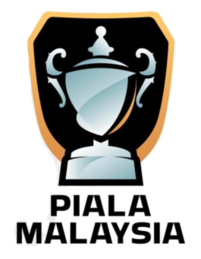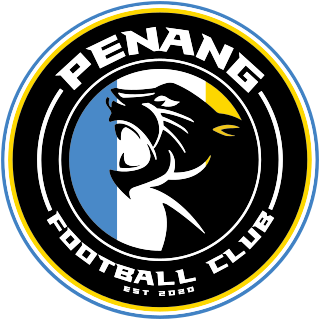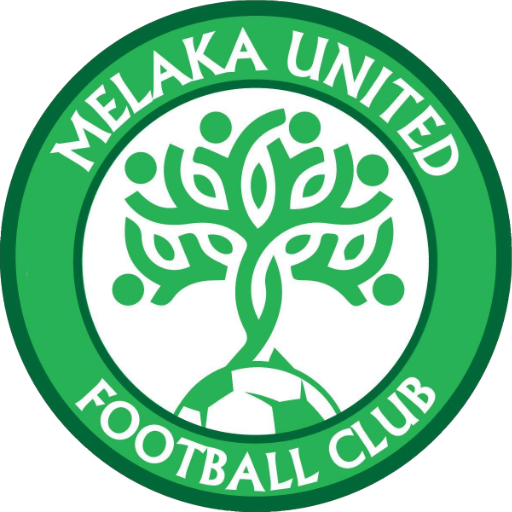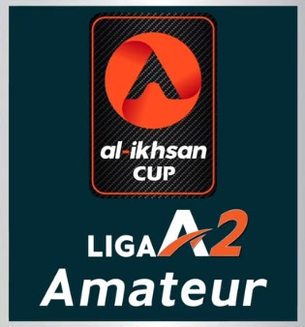Related Research Articles

The Football Association of Malaysia is the national governing body of football in Malaysia. The Football Association of Malaysia headquarters is located at Wisma FAM.

The Malaysia Cup, formerly known as Malaya Cup, is an annual football tournament in Malaysia, held at the end of the calendar year. The cup was first held in 1921. Despite its prestige and popularity as the country's oldest cup tournament, it does not guarantee a place in a continental competition, which is allocated to the Malaysia FA Cup winners. The competition was previously managed by the Football Association of Malaysia, before it was transferred to the Football Malaysia LLP in the 2016 season.
The Indonesian football league system is a series of league system for association football clubs in Indonesia. Since 1994, Liga Indonesia is the league competition featuring association football clubs, as a result of two existing top-flight football leagues merger: Perserikatan (amateur) and Galatama. Liga Indonesia is managed by PSSI, the Indonesian national football federation, and operated by PT. Liga Indonesia Baru and its previous iterations.

The Malaysia Premier League was the second-tier professional football league in Malaysia. The league replaced the former second-tier league, Liga Perdana 2 in the Malaysian football league system.
Football is the most popular national sport in Malaysia, where the first modern set of rules were established in 1921. It is run by the Football Association of Malaysia. The association administers the national football teams and league competitions.
Liga Semi-Pro was a semi-pro football league in Malaysia that operated from 1989 until 1993. The league was managed by Football Association of Malaysia. It consist of two divisions, the Liga Semi-Pro Divisyen 1 and Liga Semi-Pro Divisyen 2. Liga Semi-Pro was official established in 1989 as a semi-pro league competition for football team in Malaysia to qualify for Piala Malaysia.
Liga Perdana 1 or Liga Perdana Satu was the nation's top-tier professional football league in Malaysia that operated from 1998 to 2003.
The Malaysian League, also known as the M-League, is a terminology used to describe the professional association football league in Malaysia. The terminology was mainly used to describe the league and its divisions associated within the Malaysian football league system.

Terengganu Football Club is a professional football club based in Kuala Nerus, Terengganu, Malaysia, that competes in Malaysia Super League, the first division of Malaysian football league system. Nicknamed "The Turtles", the club was founded as Terengganu Football Association on 22 November 1956, changed its name to Terengganu Football Association in 1972 and Terengganu Football Club in 2018.

Penang Football Club is a Malaysian professional football club based in George Town, Penang, that competes in the Malaysia Super League.

Melaka United Football Club was a Malaysian professional football club based in Malacca that competed in the Malaysia Super League. They were owned by Kenteam Sdn Bhd, which is one of main nitrile glove producers in Malaysia. The club's home ground has been the Hang Tuah Stadium, before moving to Hang Jebat Stadium in Paya Rumput, Krubong in 2005. The club represented the state of Malacca in Malaysian football competitions. They reached the top division in Malaysian football after back-to-back promotions as champion of the 2015 Malaysia FAM League and 2016 Malaysia Premier League.

Football is the most popular sport in Malaysia, where the first modern set of rules for the code were established in 1921, which were a major influence on the development of the modern Laws of the Game. The sport of football in the country of Malaysia is run by the Football Association of Malaysia.
Liga Perdana 2 or Liga Perdana Dua was the nation's second-tier professional football league in Malaysia that operated from 1998 to 2003.

The Malaysia A2 Amateur League, , also known as the al-ikhsan Cup for sponsorship reasons, is the third tier football league in the Malaysian football league system. The league was created in 2018 as part of the Malaysian Football League's plan to reform the Malaysian football league structure.
Liga Perdana was the top-tier football league in Malaysia that operated from 1994 to 1997. The league was formed and established in 1994 to succeed the Liga Semi-Pro and became the Malaysian fully professional football league. At this time the league was interchangeably referred as Malaysian League.
Liga Semi-Pro Divisyen 1 was the top-tier semi-pro football league in Malaysia that operated from 1989 until 1993. The league was managed by Football Association of Malaysia. Liga Semi-Pro was official established in 1989 as a semi-pro league competition for football team in Malaysia to qualify for Piala Malaysia.
Liga Semi-Pro Divisyen 2 was a second-tier semi-pro football league in Malaysia that operated from 1989 until 1993. The league was managed by Football Association of Malaysia. Liga Semi-Pro was official established in 1989 as a semi-pro league competition for football team in Malaysia to qualify for Piala Malaysia.

Sarawak FA State Football Team was a football team which represented the Malaysian region of Sarawak from 1974 to 2020 in the Malaysian football league. It was one of the 14 Malaysian state teams of the Malaysian football structure before the Malaysian football league demanded all teams competing in the country's top two leagues to be run as or changed to professional clubs by 2021. It is also important to note that Sarawak FA is a football team that is not run as a professional football club, but rather a team that was funded and run by a Malaysian state football association that relied mostly on state government grants. How the team was run was much like all the other Malaysian state football teams competing in the old Malaysian football system before the year 2021 too. To outsiders who are not familiar with the Malaysian football system or league, the team was simply known as Sarawak FA because it was run by the Football Association of Sarawak (FAS). To those who follow Malaysian football on the other hand, the team was simply known as Sarawak or the Sarawak State Football Team.

The Malaysia A3 Community League, is a group of leagues that make up levels 4 to 9 of the Malaysian football league system.

Melaka Football Association is the governing body of football for the state of Melaka, Malaysia. MAFA is responsible for coordinating and developing football in the state of Melaka and has teamed up with the Football Association of Malaysia (FAM) as the official governing body of football in Malaysia.
References
- ↑ John Duerden (7 July 2012). "Malaysia: A new hope". ESPN.com . Retrieved 11 July 2012.
- ↑ "Malaysia hopes to relive football glory days by training 10,000 teenagers". Bernama . The Edge. 21 October 2013. Archived from the original on 2 December 2013. Retrieved 2 December 2013.
- ↑ Ooi Kin Fai (4 October 2013). "The biggest change in Malaysian football". Goal.com . Retrieved 2 December 2013.
- ↑ Simon Ingka Crown; Jeremy Veno (30 July 2010). "Football development: A tough job". The Borneo Post . Retrieved 2 December 2013.
- ↑ Jeeva Arulampalam (21 October 2009). "Malaysian soccer clubs need right structures to attract funding". Business Times. Archived from the original on 3 December 2013. Retrieved 2 December 2013.
- ↑ Shebby Singh (15 November 2013). "A much-needed intervention for the good of Malaysian football". The Malaysian Insider. Archived from the original on 3 December 2013. Retrieved 15 November 2013.
- ↑ T. Avineshwaran (21 September 2013). "Future of our football". The Star . Retrieved 2 December 2013.
- ↑ "Association Information [Football Association of Malaysia]". FIFA. Archived from the original on 17 June 2015. Retrieved 28 February 2018.
- ↑ "About Football Malaysia". Football Malaysia LLP. Archived from the original on 31 August 2015. Retrieved 28 February 2018.
- ↑ Ooi Kin Fai (7 May 2015). "Malaysian football going for the German way". Goal.com . Retrieved 4 December 2017.
- ↑ "Packed Malaysian fixtures will help build stronger national team - FMLLP". ESPN.com. 4 August 2016. Retrieved 28 February 2018.
- ↑ "Malaysian football needs to embrace professionalism". Fox Sports Asia. 2 January 2017. Archived from the original on 5 January 2017. Retrieved 28 February 2018.
- ↑ Farah Azharie (21 September 2021). "Pay more attention to the women". nst.com.my . Retrieved 21 September 2021.
- ↑ "FAM aim to make National Women's League more competitive". thesundaily.my . 16 December 2022. Retrieved 16 December 2022.
- ↑ Farah Azharie (5 August 2023). "Hannah Yeoh to hold townhall for female athletes". nst.com.my . Retrieved 5 August 2023.
- ↑ "Hannah: 2023 NWL can be turning point in women's football in Malaysia". thesundaily.my . 5 August 2023. Retrieved 5 August 2023.
- ↑ Peter Wilson; Benson Sim (28 July 2006). "The demand for Semi-Pro League football in Malaysia 1989–91: a panel data approach". Applied Economics. 27: 131–138. doi:10.1080/00036849500000015.
- ↑ "Amanat Tengku Abdullah" (in Malay). Liga Bolasepak Rakyat. 27 May 2016. Archived from the original on 4 June 2016. Retrieved 28 February 2018.
- ↑ Atsushi Fujioka; Erik Garin; Mikael Jönsson; Hans Schöggl (11 January 2018). "FA of Malaysia Cup". Rec.Sport.Soccer Statistics Foundation . Retrieved 28 February 2018.
- ↑ "Malaysia 1994". Rec.Sport.Soccer Statistics Foundation. 7 January 2001. Retrieved 28 February 2018.
- ↑ Azizul Fahmi (26 December 2008). "Pembunuh bola sepak negara" (in Malay). Kosmo! . Retrieved 28 February 2018.
- ↑ B. Suresh Ram (16 December 2015). "What happened to Malaysian football?". New Straits Times . Retrieved 28 February 2018.
- ↑ Mikael Jönsson (19 June 2003). "Malaysia 1997". Rec.Sport.Soccer Statistics Foundation. Retrieved 28 February 2018.
- ↑ Hamdan Saaid (1 July 2006). "Malaysia 2005". Rec.Sport.Soccer Statistics Foundation. Retrieved 28 February 2018.
- ↑ Hamdan Saaid (18 July 2013). "Malaysia 2007/08". Rec.Sport.Soccer Statistics Foundation. Retrieved 28 February 2018.
- ↑ Shamim Imran; Hamdan Saaid (18 July 2013). "Malaysia 2009". Rec.Sport.Soccer Statistics Foundation. Retrieved 28 February 2018.